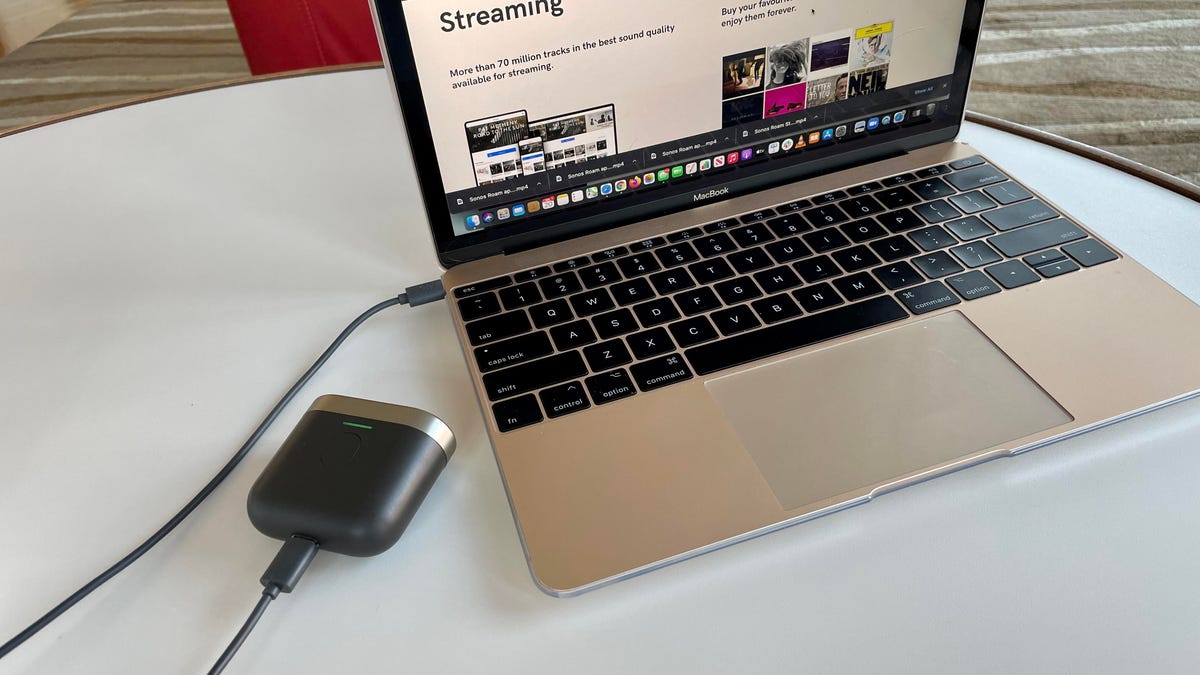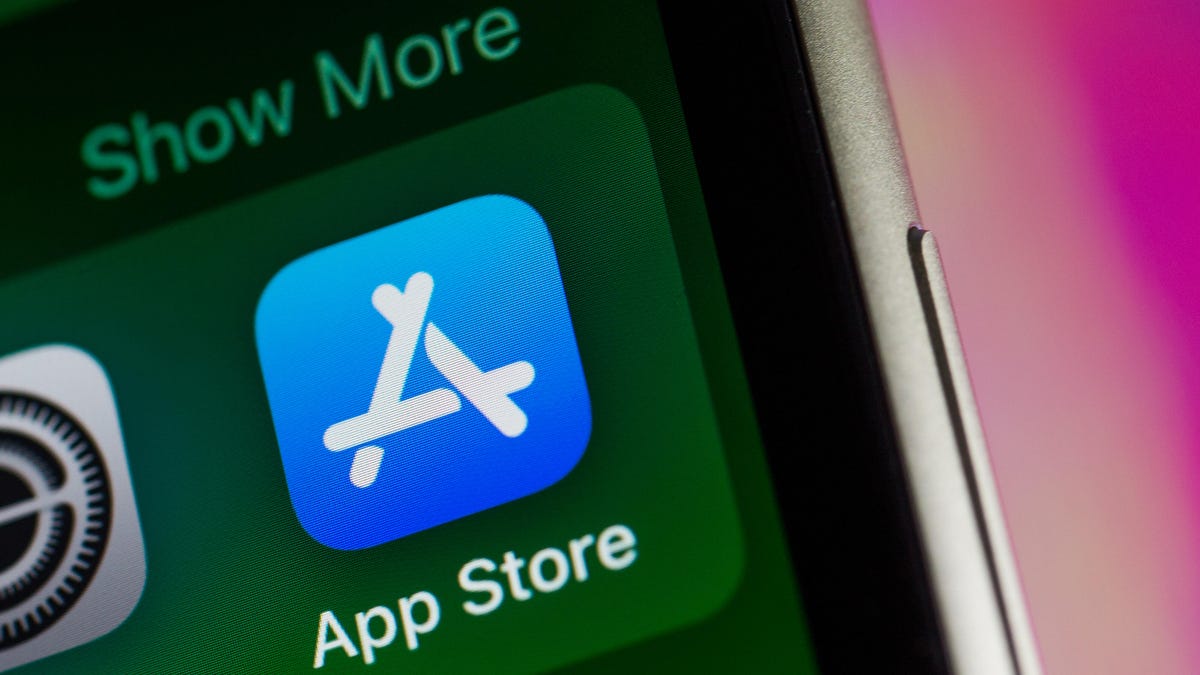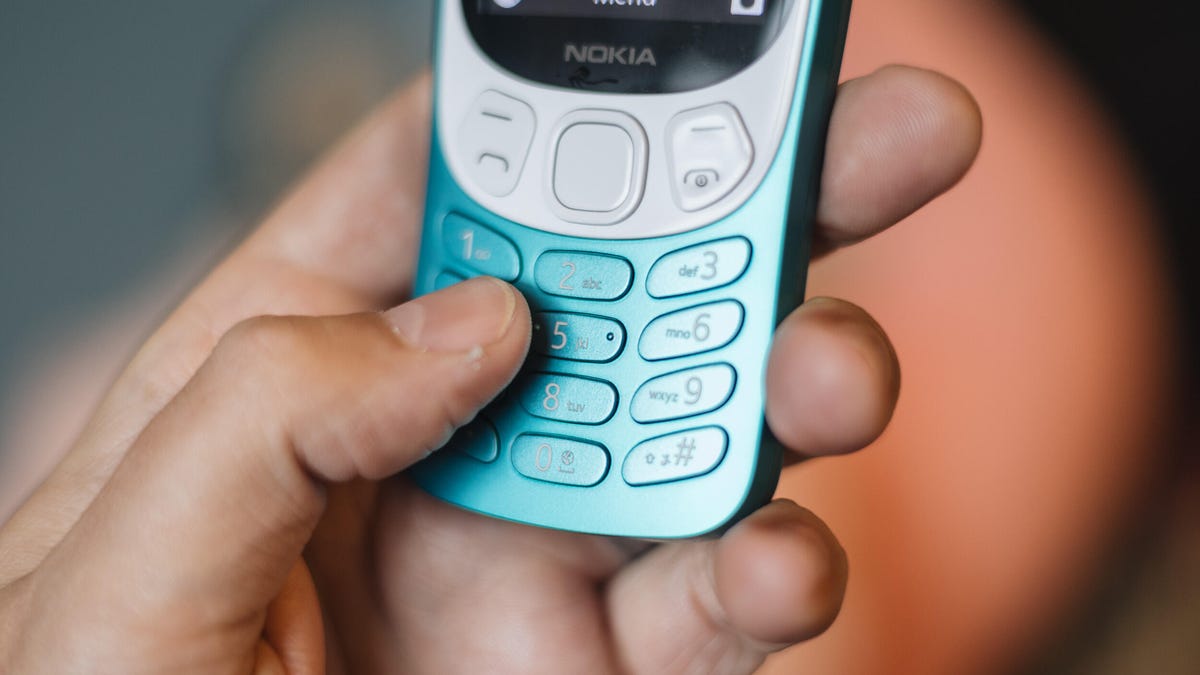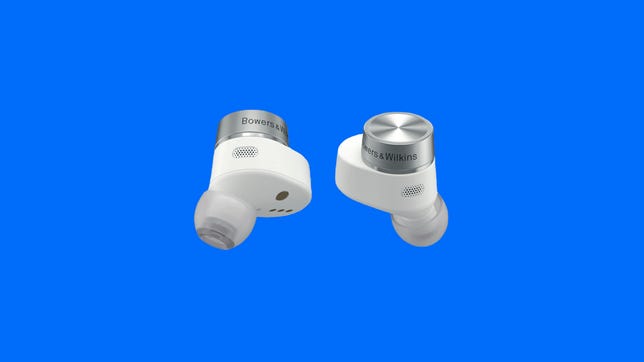Technologies
Bowers & Wilkins PI7 S2 Earbuds Review: Same Fantastic Sound, But Only Slight Improvements
The company’s flagship earbuds have the same design but offer better battery life and double the Bluetooth range.

When Bowers & Wilkins introduced its first true-wireless earbuds in April 2021, they were among the very best-sounding models in that highly competitive headphone space. Now we get the next generation of those buds, the PI7 S2 ($399, 349, AU$700) and PI5 S2 ($299, 249, AU$450) — and they manage to be both quite impressive and a tad disappointing at the same time. (For what it’s worth, the names are «pi 7» and «pi 5», styled in all caps and no spaces, not «P seventeen» and «P fifteen.» Got it?)
Like
- Great sound
- Improved battery life and Bluetooth range
- Very good noise-canceling and voice-calling capabilities
- Wireless charging case turns into a Bluetooth transceiver, enabling you to connect to an external audio source such as an in-flight entertainment system
Don’t Like
- Pricey
- Same Qualcomm chipset as in the previous model
- Missing some features typically found on premium buds
Let’s start with the underwhelming part. For better or worse, although the PI7 and PI5 now come in new color options, their design has barely changed, and they look very similar to their predecessors. If you look closely, the grilles over the microphones appear to be slightly larger, and there’s a sensor just below one of the microphones that wasn’t there previously. Bowers and Wilkins didn’t mention anything about new drivers, so presumably they’re the same, and I’ve confirmed that these new models use the same legacy Qualcomm QCC5126 chipset (with Bluetooth 5.0) as the originals. (The latest 5 series chips are the QCC5141 and QCC5144).
So what’s upgraded? According to Bowers & Wilkins, the new models have better battery life and Bluetooth range, now up to 25 meters, which is double the previous range. Additionally, the buds now integrate into the new Bowers & Wilkins Music app for iOS and Android and have a much improved set-up experience (I can attest to that).
With the original PI7 buds, you only got about four hours of battery life on a single charge with an additional four charges in the case (20 hours total). The battery life on the PI7 S2 is up to five hours for the buds with 16 hours more from the case (21 hours total). Meanwhile, the PI5 goes from 4.5 hours on a single charge to up to five hours but dips from 20 hours additional from the case to 19 hours.
Bowers & Wilkins says the battery life gains in the buds have been achieved through hardware changes, not software updates. The batteries in the buds are new and the antenna design has also changed. «The caps at the end of the earbuds — the sections that carry the logo — have been re-engineered to improve antenna performance,» a Bowers & Wilkins rep informed me. «We’ve introduced a new design of antenna and repositioned it within the earbud endcaps. At the same time, we have switched to use plastic, rather than aluminum to trim each endcap. The result is stronger Bluetooth signal strength, giving us our improved 25-meter range.»
While I certainly appreciate better battery life and improved Bluetooth range with a more reliable wireless connection, the updates struck me as relatively modest. Of course, Bowers and Wilkins could add features later, which we’ve seen before with premium buds that use Qualcomm chipsets (Jabra and Bose, for example). However, Bowers & Wilkins has never updated the firmware of its original buds. So don’t expect these to get multipoint Bluetooth pairing, which allows you to pair the buds with two devices simultaneously — say, a computer and smartphone — and have the audio automatically switch to your smartphone when a call comes in (instead, you have to manually switch between paired devices). Nor can you expect to see support for Qualcomm’s upcoming spatial audio or Bluetooth LE Audio with Auracast capabilities.
The app is also missing an equalizer to tweak your sound. I personally don’t mind a fixed EQ that sticks to a company’s signature sound, but a lot of people like to customize the sound settings of their headphones.
All that said, the touch controls work very well, as does the automatic ear-detection feature. And the PI7 S2’s wireless charging case, like its predecessor, converts into a transceiver, so you can plug the case into the headphone port on an airplane’s inflight entertainment system and wirelessly stream audio from the case to the earbuds. Alternately, you could also connect the case to a laptop audio port and use it to wirelessly stream high-resolution audio to the buds.
Note that the PI5 is very much a step-down model. It’s got a single driver instead of the dual drivers found in the PI7 and one less microphone on each earbud (two instead of three). The aforementioned «wireless audio retransmission» feature in its case is also absent.
All about the sound
Simply put, the PI7 S2 sound great so long as you get a tight seal from one of the three sizes of included ear tips. I’m a fan of Bowers & Wilkins ear tips, which have a similar design to Sennheiser ear tips, and the large tips fit my ears well. These are large ear buds that will stick out of your ears a fair amount, but they did fit my ears comfortably and fairly securely. They offer IPX54 water-resistance, which means they’re splashproof and dust-resistant, so you can run with them, though there are better earbuds options with sport fins that are more suitable for sporting activities (I’m not sure you want to risk a $399 earbud dropping out of your ear). However, I would have no problem using them at the gym.
Like its predecessor, the PI7 supports Qualcomm aptX Adaptive wireless transmission (which includes the aptX HD codec) from compatible mobile devices, allowing for «high-resolution music transmission from suitable streaming services, such as Qobuz.» The list of Android devices — and dedicated music players — that support aptX Adaptive has grown over the last few years and you should ideally pair the buds with a device that supports aptX Adaptive (along with a streaming service that offers high-resolution streaming). That said, the buds also work just fine and sound very good with Apple’s iPhones, which support the AAC codec. (Both the PI5 and PI7 support AAC streaming but the PI5 only supports standard aptX, not aptX Adaptive.) Alas, Sony’s LDAC hi-res audio codec is not supported, but typically headphones support either aptX or LDAC, not both.
I listened to the buds using an iPhone 14 Pro and an Asus ROG 6 Android smartphone that’s powered by Qualcomm’s Snapdragon 8 Plus Gen 1 mobile platform. As I said with the original PI7, the PI7 S2 has exactly what I’m looking for in a good set of headphones: Accurate and articulate sounding with deep, well-defined bass, natural sounding mids, nicely detailed treble and a wide soundstage that gives the overall sound some largesse.
On my iPhone, I tested the buds with Spotify, Apple Music and Qobuz. The PI7 S2 can go toe-to-toe and, in some cases, slightly edge out many of the top mainstream earbuds out there for sound, including Sony’s WF-1000XM4, Apple’s AirPods Pro 2, Bose’s QuietComfort Earbuds 2, Sennheiser Momentum True Wireless 3 and Bang and Olufsen Beoplay EX, which also cost $400.
However, when I switched to the Asus and streamed high-resolution tracks from Qobuz (with aptX Adaptive), I went from saying to myself, «That sounds really good» to «Wow, that sounds awesome.» Bowers & Wilkins has a playlist on Qobuz for its PX8 full-size headphones, so I ran through a bunch of those tracks. Some of them included Taylor Swift’s Vigilante Shit, Athletes of God’s Don’t Wanna Be Normal, Anna B Savage’s Since We Broke up, Orbital’s Dirty Rat and Pixies’ Vault of Heaven. The quality of the bass was a level up — more visceral with added girth and punch — and there was a little more sparkle, depth and nuance to the music all around. I came away feeling my Spotify needed an upgrade.
Good noise canceling but not best-in-class
As with the sound, you’ll need a tight seal to get optimal performance for noise canceling, which can be set to on, off or an «auto» mode that adapts the noise canceling according to the ambient sound in your environment. You can also adjust how much «passthrough» sound you want to let into the buds, which is typically referred to as an awareness or transparency mode.
The buds’ transparency mode isn’t quite as natural sounding as some of the others I’ve used (at the moment, the AirPods Pro 2’s transparency mode is the gold standard). I settled on a midway point for the slider setting in between «min» and «max» for what I felt was the best transparency experience.
The noise canceling is quite effective and does a nice job of reducing a decent amount of ambient sound, particularly in the lower frequencies. However, the Bose QuietComfort Earbuds 2 do a better job reducing noise across a broader range of frequencies (higher frequencies are more challenging for noise-canceling headphones to muffle). So while the PI7’s noise canceling is clearly respectable, it’s not in the same class as the earbuds’ sound.
The PI7’s voice-calling capabilities are at a similar level — very good but not best-in-class. The buds did a nice job of reducing background noise on the streets of New York. While callers said they could hear a bit of background noise, it was reduced considerably, and they said my voice came clearly without any warbling. I could also hear them quite well, and there’s a bit of sidetone so you can hear your voice in the buds as you speak.
Bowers & Wilkins PI7 S2 final thoughts
Yes, the PI7 S2s are technically a second-gen product, but they feel more like a generation 1.5 product. Bowers & Wilkins has essentially smoothed out some of the rough edges on the original buds (I mean that metaphorically, not literally). The extra hour of battery life and extended Bluetooth range (with seemingly a slightly more reliable wireless connection) are welcome changes. And the setup and integration with the Bowers & Wilkins Music app creates a better overall user experience, despite its somewhat bare-bones quality (compared to Sony’s Headphones app anyway).
If you’re comparing the PI7 S2 to the PI5 S2, which also sound excellent but not quite as good as the PI7, you’ll want to keep an eye on the PI5 S2’s price, which should dip more quickly than the PI7 S2’s price. The original Pi5s are selling for as low as $150, or $100 off their list price of $250, so we’ll see where everything shakes out. The PI5s could end up being the better value, though it’s unfortunate that Bowers & Wilkins added $50 to their list price.
Needless to say, $400 is a lot to spend on a set of earbuds. And when you spend this much, you ideally want the latest technology and features (aptX Lossless, for example). But if great sound is your priority, the PI7 S2s deliver it. And with the buds paired to the right device and streaming service, they can sound downright special.
Technologies
Judge Blocks Texas App Store Age-Check Law
A preliminary injunction found the Texas law, set to begin Jan. 1, is «more likely than not unconstitutional.»

A new Texas state law set to take effect on Jan. 1 would have required app stores to implement age verification processes. But the law has been put on hold, at least temporarily, by a federal court judge.
As reported by the Texas Tribune, Senate Bill 2420, also known as the Texas App Store Accountability Act, is the subject of a temporary injunction issued by US District Judge Robert Pitman.
Pitman said in his decision that the law as written is broad, vague and «more likely than not unconstitutional.» However, he also wrote the court «recognizes the importance of ongoing efforts to better safeguard children when they are on their devices.»
Don’t miss any of our unbiased tech content and lab-based reviews. Add CNET as a preferred Google source.
The Texas law, signed into law by Governor Greg Abbott in May, requires app store operators — including Apple, Google, Nintendo, Steam and more — to build age verification processes for the storefronts and to only allow downloads to minors who obtain parental consent. The injunction is a ruling in an October lawsuit filed by the Computer & Communication Industry Association.
CCIA senior vice president Stephanie Joyce said in a statement, «This Order stops the Texas App Store Accountability Act from taking effect in order to preserve the First Amendment rights of app stores, app developers, parents, and younger internet users. It also protects parents’ inviolate right to use their own judgment in safeguarding their children online using the myriad tools our members provide.»
Other individuals and the advocacy group Students Engaged in Advancing Texas also filed suits over the law, the Texas Tribune reported.
App Store Accountability Act
The bill author, State Senator Angela Paxton, said the bill was meant to give parents «common sense tools to protect their kids and to survive court challenges by those who may have lesser priorities.»
The language of Texas Senate Bill 2420 does not only include mobile app stores from Apple or Google, but any «website, software application, or other electronic service that distributes software applications from the owner or developer of a software application to the user of a mobile device.»
By that definition, websites with links to browser games or mobile game consoles with download options would fall under the Texas law as written. The law also defines mobile devices as including phones and tablets, as well as any other handheld device capable of transmitting or storing information wirelessly.
The parental consent aspect of the law requires those under 18 to have an app store account affiliated with a parent or guardian to purchase or download applications.
Age verification elsewhere
In an effort to keep adult materials out of reach of minors and to protect children from potentially harmful content and interactions, tech companies have been compelled by law or through legal action to verify the age of users.
Roblox, which has a huge audience of minors, began rolling out stricter age verification after investigations and lawsuits hurt its reputation as a safe gaming space. Australia is perhaps the most large-scale example of a government restricting access to online content. In December, Australia began restricting social media access to those 16 and older. Reddit recently challenged that law.
In the US, age verification laws have primarily targeted adult sites. Texas already has a law on the books that requires adult sites to age-block their content. The Supreme Court upheld that law in a June ruling. The UK has also enacted age restriction rules for adult sites as have other US states.
Technologies
Today’s NYT Mini Crossword Answers for Thursday, Dec. 25
Here are the answers for The New York Times Mini Crossword for Dec. 25.

Looking for the most recent Mini Crossword answer? Click here for today’s Mini Crossword hints, as well as our daily answers and hints for The New York Times Wordle, Strands, Connections and Connections: Sports Edition puzzles.
Need some help with today’s Mini Crossword? Of course, there’s a very Christmassy clue involved. And once you solve the entire puzzle, look at the letters used in all the answers and see what they have in common. (5-Across will tell you!) Read on for all the answers. And if you could use some hints and guidance for daily solving, check out our Mini Crossword tips.
If you’re looking for today’s Wordle, Connections, Connections: Sports Edition and Strands answers, you can visit CNET’s NYT puzzle hints page.
Read more: Tips and Tricks for Solving The New York Times Mini Crossword
Let’s get to those Mini Crossword clues and answers.
Mini across clues and answers
1A clue: ___ King Cole, singer with the album «The Magic of Christmas»
Answer: NAT
4A clue: Body drawings, informally
Answer: TATS
5A clue: Letters to ___ (what this Mini was made with)
Answer: SANTA
6A clue: Huge fan, in slang
Answer: STAN
7A clue: «Illmatic» rapper
Answer: NAS
Mini down clues and answers
1D clue: Grandmothers, by another name
Answer: NANAS
2D clue: Abbr. before a name on a memo
Answer: ATTN
3D clue: Org. with long lines around the holidays
Answer: TSA
4D clue: «See ya later!»
Answer: TATA
5D clue: Govt.-issued ID
Answer: SSN
Don’t miss any of our unbiased tech content and lab-based reviews. Add CNET as a preferred Google source.
Technologies
Don’t Let a Border Agent Ruin Your Holiday Trip. Travel With a Burner Phone
Yes, you should leave your main phone at home and take a cheap burner this winter.

Prepare for a whole new level of border-crossing anxiety this holiday season: the high-probability of a phone search. New figures from US Customs and Border Protection say agents aren’t just glancing at your lock screen anymore — they are aggressively ramping up device inspections, even for citizens coming home. We aren’t just talking about a quick scroll through your photos, either. Agents are increasingly using forensic tools to clone and analyze everything on your device.
The stats are genuinely alarming. In just a three-month window this year, nearly 15,000 devices were flagged for searches, with over a thousand subjected to deep-dive data copying. If you’re traveling with your primary phone, you are essentially carrying your entire digital existence into a legal gray zone where privacy is optional.
The smartest defensive play is remarkably low-tech: the burner phone. By traveling with a secondary, stripped-down device, you ensure your private data stays safe at home while you stay connected abroad. But privacy isn’t the only perk. Moving to a «dumb» phone is the ultimate digital detox, helping you escape the notification trap that usually ruins a vacation.
Even figures like Conan O’Brien have ditched the smartphone to cut through the noise. Whether you’re dodging invasive border searches or just trying to enjoy your trip without being glued to a screen, a burner might be the best travel investment you make this year.
Read more: Best Prepaid Phone of 2025
Although carriers have offered prepaid phones since the ’90s, «burner phones» or «burners» became popular in the 2000s following the celebrated HBO series The Wire, where they helped characters avoid getting caught by the police. Although often portrayed in that light, burners aren’t only used by criminals; they’re also used anyone concerned with surveillance or privacy infringement.
What is a burner phone, and how does it work? Here’s everything you need to know about burners and how to get one.
Don’t miss any of our unbiased tech content and lab-based reviews. Add CNET as a preferred Google source.
What is a burner phone?
A burner phone is a cheap prepaid phone with no commitments. It comes with a set number of prepaid call minutes, text messages or data, and it’s designed to be disposed of after use.
Burner phones are typically used when you need a phone quickly, without intentions of long-term use. They’re contract-free, and you can grab them off the counter. They’re called burner phones because you can «burn» them (trash them) after use, and the phone can’t be traced back to you, which makes them appealing to criminals. Of course, those committed to illicit activities often do more than just throw these phones in the trash, and often completely obliterate the SIM cards and other materials by smashing them with a hammer or melting them away.
Burners are different from getting a regular, contract-bound cellphone plan that requires your information to be on file.
Why should you use a burner phone?
Burner phones are an easy way to avoid cellphone contracts or spam that you get on your primary phone number. Burners aren’t linked to your identity, so you can avoid being tracked down or contacted.
You don’t have to dispose of a burner phone after use. You can add more minutes and continue using it. Burner phones can still function as regular phones, minus the hassle of a contract.
You can also get a burner phone as a secondary phone for a specific purpose, like having a spare phone number for two-factor authentication texts, for business or to avoid roaming charges while traveling. Burner phones are often used by anyone concerned with privacy.
Read more: The Data Privacy Tips Digital Security Experts Wish You Knew
Burner phones, prepaid phones, smartphones and burner SIMs: What’s the difference?
Burner phones are cheap phones with simple designs that lack the bells and whistles of a smartphone. Because they’re designed to be disposable, you only get the essentials, as seen by the most common version, the flip phone.
All burner phones are prepaid phones, but not all prepaid phones are burners. What sets a burner apart is that you won’t have to give away any personal information to get one, and it won’t be traceable back to you. Again, a burner phone is cheap enough to be destroyed after use.
Prepaid smartphones are generally low-end models. You can use any unlocked smartphone with prepaid SIM cards, essentially making it a prepaid phone.
If you want a burner, you don’t necessarily have to buy a new phone. You can get a burner SIM and use it with an existing phone. Burner SIMs are prepaid SIMs you can get without a contract or giving away personal information.
Where can you buy a burner phone?
Burner phones are available at all major retail outlets, including Best Buy, Target and Walmart. They’re also often available at convenience stores like 7-Eleven, local supermarkets, gas stations and retail phone outlets like Cricket and Metro.
You can get a burner phone with cash, and it should cost between $10 and $50, although it may cost more if you get more minutes and data. If you’re getting a burner phone specifically to avoid having the phone traced back to you, it makes sense to pay with cash instead of a credit card.
If you just want a prepaid secondary phone, you can use a credit card. Just keep in mind that credit cards leave a trail that leads back to you.
There are also many apps that let you get secondary phone numbers, including Google Fi and the Burner app. However, these aren’t burners necessarily because the providers typically have at least some of your personal information. Additionally, apps like Google Talk require a phone number that’s already in use for you to choose a number with the service.
If you’re just looking to get a solid prepaid phone without anonymity, check out our full guide for the best prepaid phone plans available. We also have a guide for the best cheap phone plans.
-

 Technologies3 года ago
Technologies3 года agoTech Companies Need to Be Held Accountable for Security, Experts Say
-

 Technologies3 года ago
Technologies3 года agoBest Handheld Game Console in 2023
-

 Technologies3 года ago
Technologies3 года agoTighten Up Your VR Game With the Best Head Straps for Quest 2
-

 Technologies4 года ago
Technologies4 года agoBlack Friday 2021: The best deals on TVs, headphones, kitchenware, and more
-

 Technologies4 года ago
Technologies4 года agoVerum, Wickr and Threema: next generation secured messengers
-

 Technologies4 года ago
Technologies4 года agoGoogle to require vaccinations as Silicon Valley rethinks return-to-office policies
-

 Technologies4 года ago
Technologies4 года agoOlivia Harlan Dekker for Verum Messenger
-

 Technologies4 года ago
Technologies4 года agoiPhone 13 event: How to watch Apple’s big announcement tomorrow

